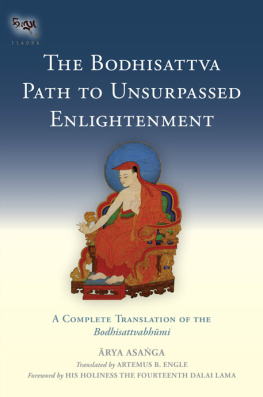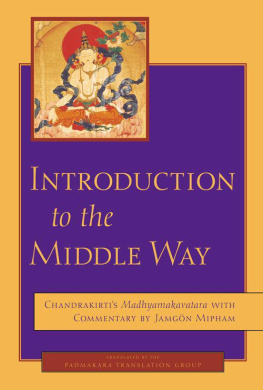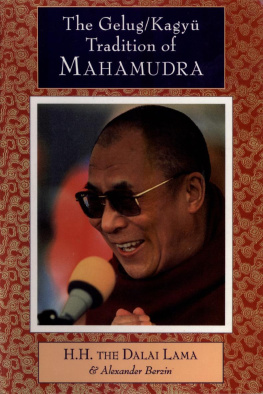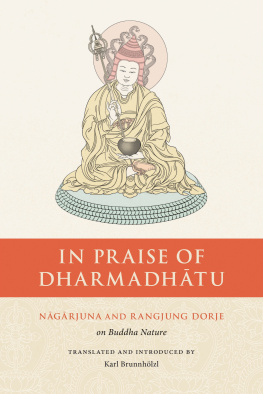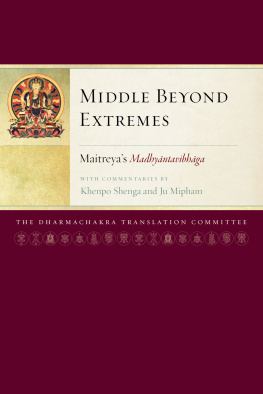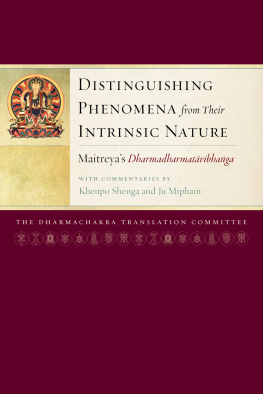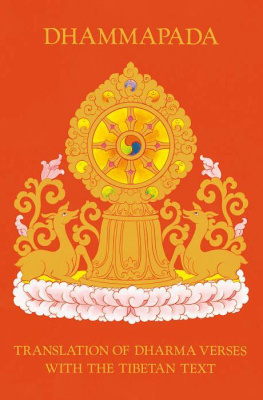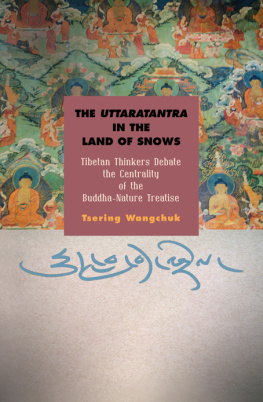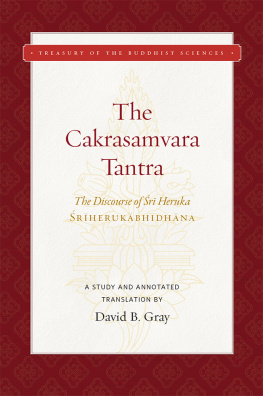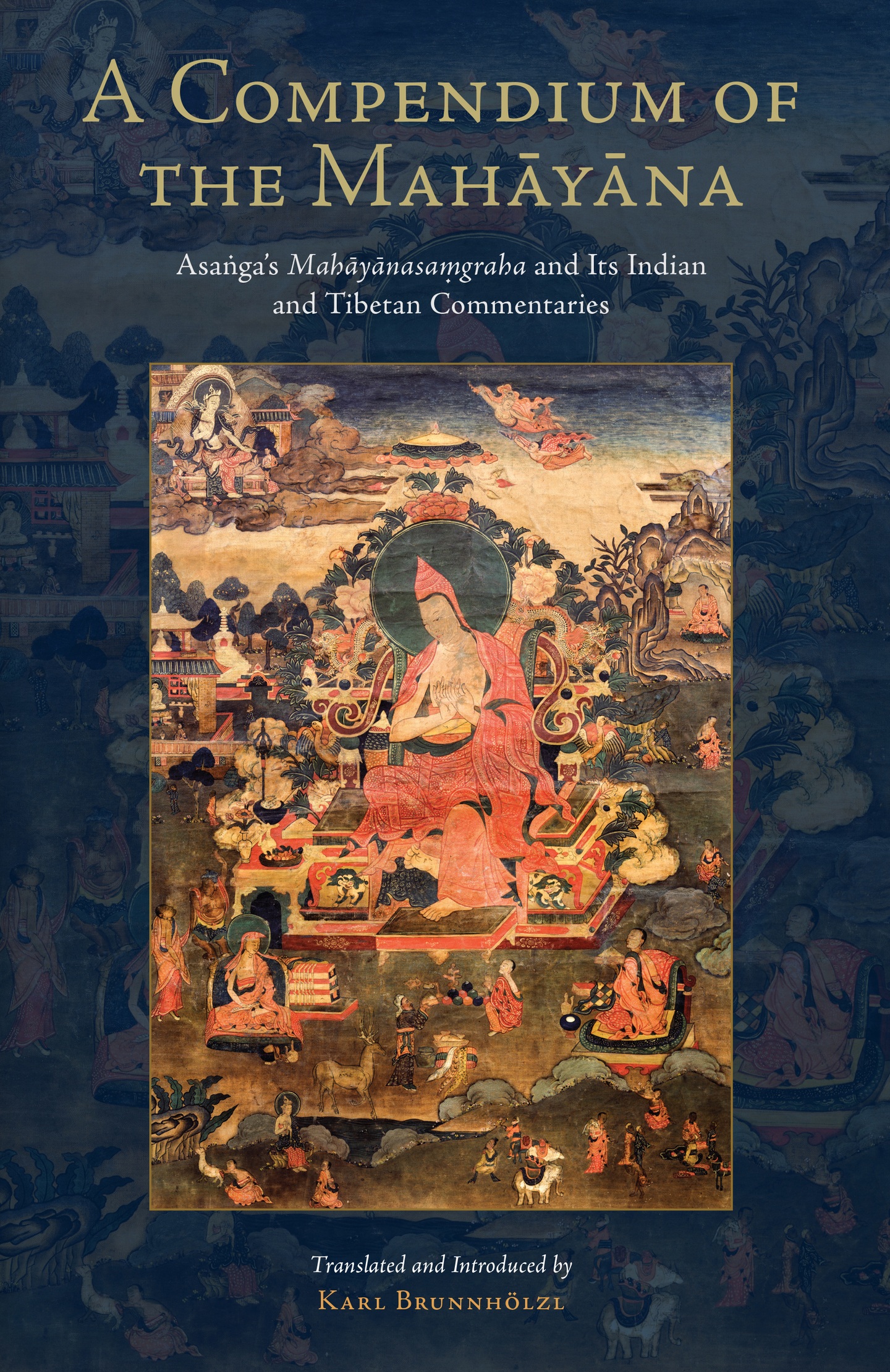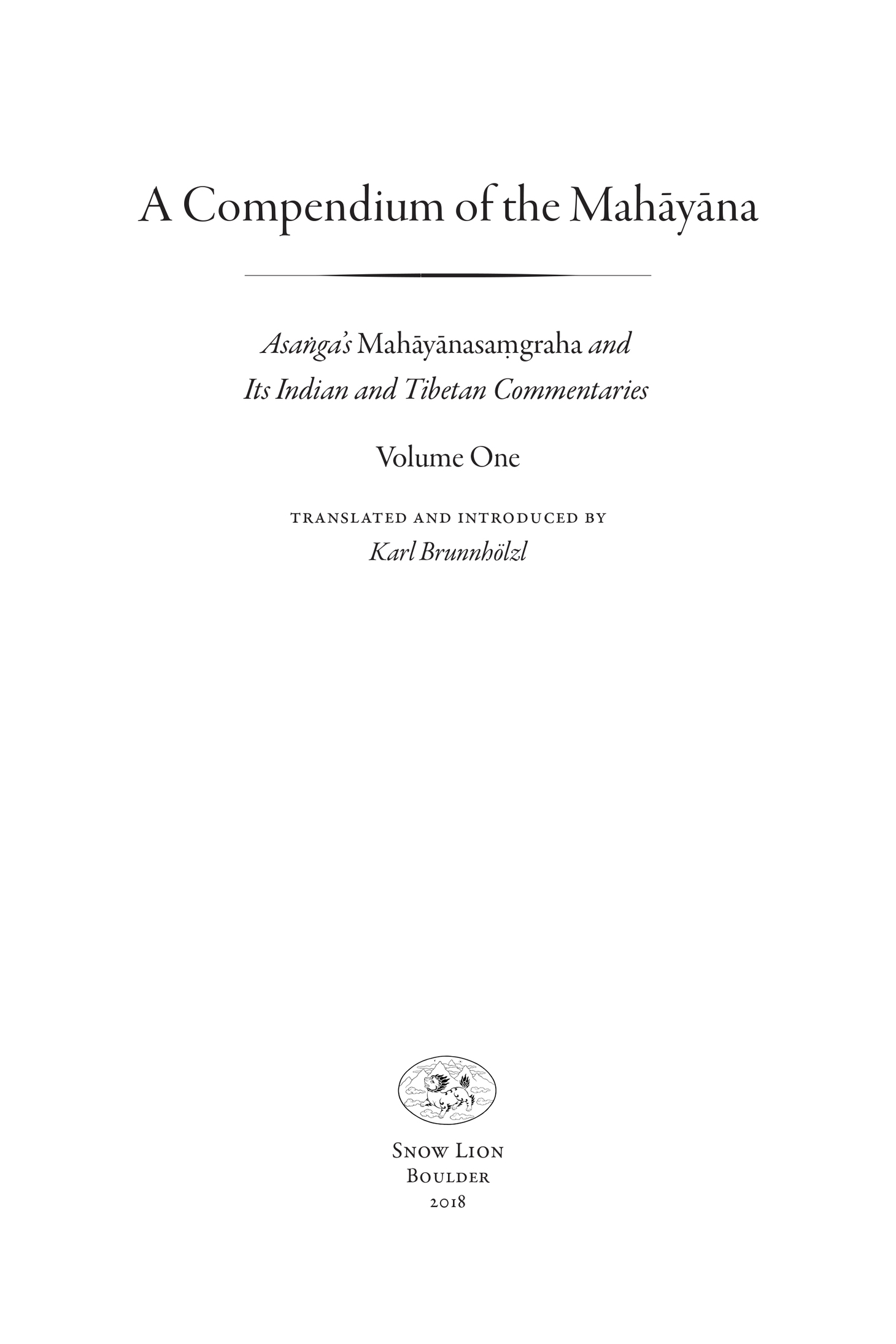Contents
Landmarks
Print Page List
T HE T SADRA F OUNDATION S ERIES
published by Snow Lion, an imprint of Shambhala Publications
Tsadra Foundation is a U.S.-based nonprofit organization that contributes to the ongoing development of wisdom and compassion in Western minds by advancing the combined study and practice of Tibetan Buddhism.
Taking its inspiration from the nineteenth-century nonsectarian Tibetan scholar and meditation master Jamgn Kongtrl Lodr Tay, Tsadra Foundation is named after his hermitage in eastern Tibet, Tsadra Rinchen Drak. The Foundations various program areas reflect his values of excellence in both scholarship and contemplative practice, and the recognition of their mutual complementarity.
Tsadra Foundation envisions a flourishing community of Western contemplatives and scholar-practitioners who are fully trained in the traditions of Tibetan Buddhism. It is our conviction that, grounded in wisdom and compassion, these individuals will actively enrich the world through their openness and excellence.
This publication is a part of the Tsadra Foundations Translation Program, which aims to make authentic and authoritative texts from the Tibetan traditions available in English. The Foundation is honored to present the work of its fellows and grantees, individuals of confirmed contemplative and intellectual integrity; however, their views do not necessarily reflect those of the Foundation.
Tsadra Foundation is delighted to collaborate with Shambhala Publications in making these important texts available in the English language.
Snow Lion
An imprint of Shambhala Publications, Inc.
4720 Walnut Street
Boulder, Colorado 80301
www.shambhala.com
2018 by Tsadra Foundation
All rights reserved. No part of this book may be reproduced in any form or by any means, electronic or mechanical, including photocopying, recording, or by any information storage and retrieval system, without permission in writing from the publisher.
Cover design by Tsadra Foundation
Library of Congress Cataloging-in-Publication Data
Names: Asaga, author. | Brunnhlzl, Karl, translator, editor. | Tsadra Foundation.
Title: A compendium of the Mahyna: Asagas Mahynasagraha and its Indian and Tibetan commentaries/translated and introduced by Karl Brunnhlzl.
Other titles: Mahynasagraha. English
Description: First edition. | Boulder, Colorado: Snow Lion, An imprint of Shambhala
Publications, Inc., 2018. | Series: Tsadra Foundation series | Includes bibliographical references and index.
Identifiers: LCCN 2017021166 | ISBN 9781559394659 (hardcover: alk. paper)
eISBN 9780834841727
Subjects: LCSH: Yogacara (Buddhism)Early works to 1800.
Classification: LCC BQ2982.E5 B78 2018 | DDC 294.3/92dc23
LC record available at https://lccn.loc.gov/2017021166
v5.3.2
a
A CKNOWLEDGMENTS
My deep gratitude and respect go to Khenchen Tsltrim Gyamtso Rinpoche for all his profound and detailed teachings on Yogcra, mainly through the five texts of Maitreya. I am likewise very thankful to all the modern Yogcra scholars with whom I had the honor to study and whose writings have been a great support in presenting several parts of this book, foremost among them Professors Lamotte, de la Valle Poussin, Nagao, Schmithausen, Mathes, Griffiths, Keenan, Watanabe, and Lusthaus. I would also like to thank Juhee Jeong, Patrick Carr, and Fitri Junoes for their help with research in the Chinese canon and sharing some of their translations. As always, I am greatly appreciative of the generous support by the Tsadra Foundation, which has made the research and the translations in these three volumes on the Mahynasagrahapossible. Big thanks also go to Michael Wakoff for his skilled and meticulous editing.
If there is anything in these volumes that sounds good, makes sense, and serves as an antidote to ignorance, confusion, and suffering, may it be relished as originating from realized masters and scholars truly vast in learning.


